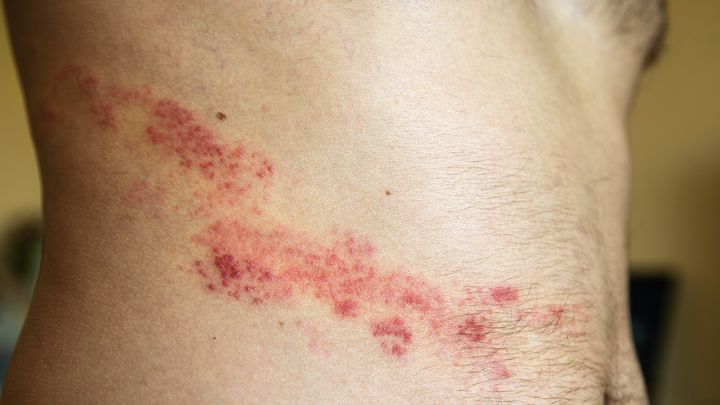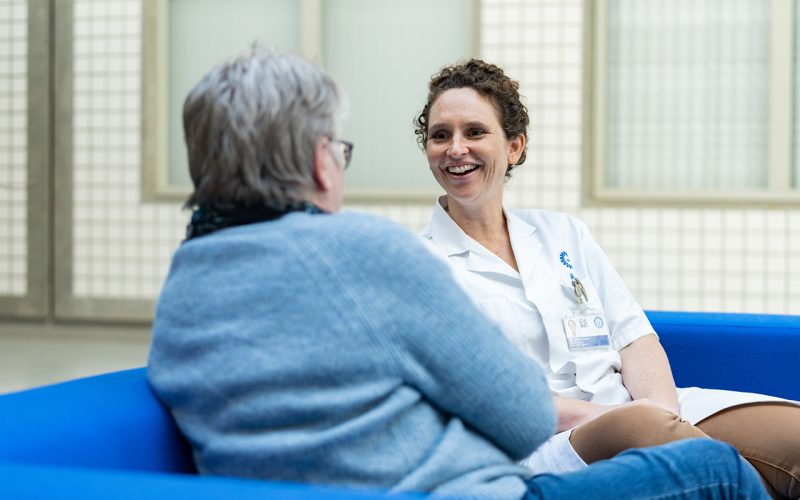The shingles vaccine has been around for ten years, yet many people are unaware of it and the vaccine is expensive. Anesthesiologist and pain specialist Mienke Rijsdijk from UMC Utrecht saw many patients with shingles. They were sad, angry, and in continuous intense pain. “They didn’t understand why they had never been vaccinated against this painful, sometimes chronic condition. I understood their frustration and encouraged them to take action together.” And with success: from 2027 onwards, the shingles vaccine will be free in the Netherlands for everyone aged 60 and older.
The postherpetic neuralgia expertise center at UMC Utrecht treats patients with severe nerve pain after shingles. Pain specialist Mienke Rijsdijk, MD, PhD elaborates: “This pain is so intense and vicious. It’s like toothache, but in your arm or leg. Some patients describe it as if they are being stabbed with knives, or that their skin is on fire.” Pain after shingles can seriously disrupt daily life, sometimes even leading to depression or requests for euthanasia. So, the impact is major.
Unknown and expensive
About a quarter of people get shingles. And it could often have been prevented. But why aren’t people vaccinated? Mienke: “In 2019, the Health Council of the Netherlands recommended vaccinating with the Shingrix shingles vaccine, but many people are unaware of it. There has never been a large-scale campaign about the shingles vaccine, such as a flu shot campaign. And even if people are aware of the vaccine, they have to pay a lot for it: around 450 euros.”
Patients join forces for a vaccine
A group of patients at UMC Utrecht joined forces to draw attention to postherpetic neuralgia. They approached the media and put pressure on politicians. Chantal Tesson, herself a patient with chronic pain after shingles, founded the Stichting Pijn na Gordelroos (Pain after Shingles Foundation) with a number of other patients. With this foundation, she wants to support fellow patients and urge politicians to take action. She succeeded, and political attention grew. And with success: recently, the Dutch Ministry of Health, Welfare and Sport announced that the vaccine will be available to everyone aged 60 and over from 2027 onwards.
Chantal: “Many people I talk to tell me how the pain has completely turned their lives upside down. There is a vaccine that can prevent this suffering, but it was unaffordable for many. That had to change.” And now it has. I am very happy that this important step has now been officially laid down in the renewed healthcare agreement. This will prevent a lot of personal suffering as a result of shingles.”
Patients made the difference
From UMC Utrecht, Mienke referred patients from her office to the foundation. This allowed a larger group to find each other and speak out together, including to the media. Mienke: “I am extremely proud that this has been achieved and that our patients have taken action. It has led to great things; their efforts have really made a difference, even if it no longer benefits them personally.”

Typical band of blisters on the torso of a patient with shingles
Viral infection
Shingles, also known as herpes zoster, is a viral disease characterized by a painful skin rash with blisters in a localized area. Typically the rash occurs in a single, wide mark either on the left or right side of the body or face. Two to four days before the rash occurs, there may be tingling or local pain in the area. Other common symptoms are fever, headache, and tiredness. The rash usually heals within two to four weeks, but some people develop ongoing nerve pain which can last for months or years, a condition called postherpetic neuralgia. In those with poor immune function the rash may occur widely. Shingles is caused by the varicella zoster virus that also causes chickenpox. In the case of chickenpox, the initial infection with the virus typically occurs during childhood or adolescence. Once the chickenpox has resolved, the virus can remain dormant (inactive) in human nerve cells (dorsal root ganglia or cranial nerves) for years or decades, after which it may reactivate and travel along nerve bodies to nerve endings in the skin, producing the typical blisters.
